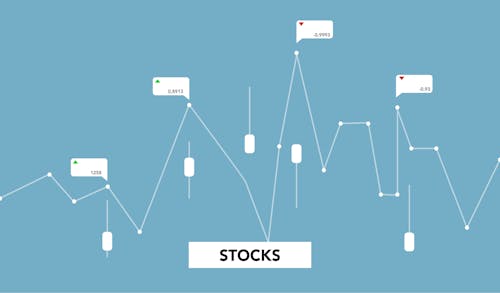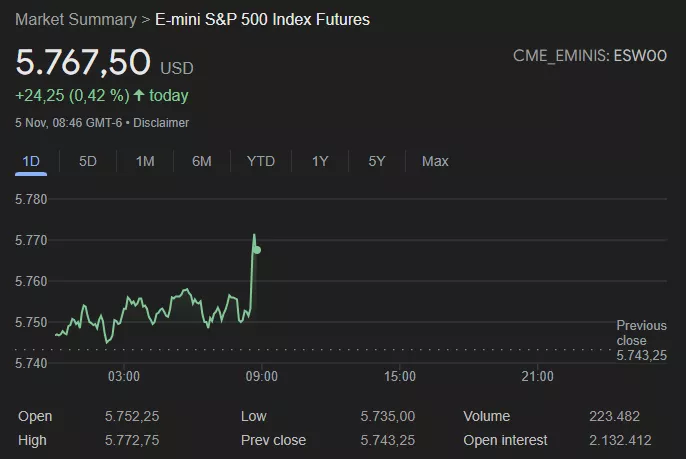 Image Source:
Image Source:
Our perspective underscores a cautiously optimistic stance with selective positioning, as key events unfold around the U.S. presidential election and Federal Reserve policy. Key Points to Address:
Key Points to Address:
Market Gains and Sector Performance: U.S. equities posted moderate gains on Tuesday, with the S&P 500, Nasdaq, and Dow Jones showing positive momentum despite the cautious tone among traders. Technology, consumer discretionary, and communication services led the rally, underscoring investor preference for growth-oriented sectors amid election uncertainty. Strong performances from Nvidia, Meta, Broadcom, and Tesla reflect investor confidence in megacaps and high-growth names, while weaker performance in real estate, healthcare, and materials suggests a cautious approach to cyclical and defensive sectors as the election outcome remains uncertain.
Election-Driven Uncertainty: As Americans vote in a close presidential race, polls indicate a tighter contest between Kamala Harris and Donald Trump than previously expected. Market participants are closely watching both the presidential outcome and congressional control, as a party sweep could significantly impact fiscal policy, particularly around spending, taxes, and regulation. This uncertainty has influenced a “wait-and-see” approach, with investors reassessing “Trump trade” positions and reducing exposure to sectors that may face policy shifts depending on the election outcome. The dollar index’s slight decline reflects this unwinding, as traders position cautiously ahead of potential policy changes.
Federal Reserve Policy Outlook: The Fed’s anticipated 25-bps rate cut on Thursday highlights its cautious approach as it balances persistent inflation against a cooling labor market. With markets also pricing in another quarter-point cut in December, the Fed’s approach aligns with its goal to provide moderate economic support without stoking inflation. Treasury yields, which edged up to 4.3% following Monday’s decline, reflect investor caution around both the Fed’s policy trajectory and election-related fiscal policy implications. Longer-term, the Fed’s rate path will be guided by incoming inflation and labor market data, making near-term flexibility in portfolio positioning critical.
Treasury Yields and Dollar Dynamics: The recent uptick in the 10-year U.S. Treasury yield to 4.3% suggests investor caution amid election-related uncertainties. If the election outcome points toward policies favoring higher spending and expansionary fiscal measures, Treasury yields could face upward pressure due to inflation expectations and increased credit risk for U.S. debt. Meanwhile, the dollar’s recent decline reflects reduced demand for “Trump trade” positions and uncertainty around the election, providing potential relief for sectors sensitive to dollar strength, such as tech and consumer discretionary.
Strategic Implications:
Selective Equity Exposure: With growth-oriented sectors performing well, maintaining a focus on high-quality tech, consumer discretionary, and communication services companies offers potential upside amid election-driven uncertainty. Selective exposure to megacaps, particularly those with robust fundamentals like Nvidia, Meta, and Broadcom, might be favorable, while a cautious stance on cyclical and defensive sectors can help mitigate downside risk.
Fixed Income and Rate Sensitivity: Given the Fed’s cautious approach and the potential for a more gradual easing path, fixed-income portfolios should focus on short-to-medium-duration bonds to reduce rate sensitivity. Inflation-linked securities may provide additional protection if the election outcome drives inflationary expectations higher. In light of election uncertainty and rate expectations, maintaining flexibility in duration positioning will help manage interest rate risk.
Currency Hedging for Global Exposure: The dollar’s pullback amid election-driven uncertainty could support U.S. exporters and multinationals with foreign revenue exposure. Investors with significant international holdings may consider currency hedging strategies to manage dollar volatility, especially if election outcomes influence fiscal policy in ways that impact dollar demand.
Monitoring Election and Economic Data: Both the election outcome and upcoming Fed decision will be pivotal in shaping market sentiment. A proactive approach to managing policy-sensitive sectors may be favorable, as any significant fiscal policy shifts could impact areas like infrastructure, defense, and healthcare. Additionally, continued focus on labor and inflation data will inform expectations on Fed policy and help adjust positioning as economic indicators evolve.
More By This Author:

